New data released on clobazam for LGS
Recent data were released on a long-term, open-label extension study evaluating clobazam for the adjunctive treatment of drop seizures.
Clobazam tablets for oral use (Onfi Tablets CIV, Lundbeck), are benzodiazepines indicated for adjunctive treatment of seizures associated with Lennox-Gastaut syndrome (LGS) in patients 2 years of age or older.
At the annual meeting of the American Epilepsy Society in December 2012, data from a long-term, open-label extension (OLE) study evaluating clobazam tablets for the adjunctive treatment of drop seizures associated with LGS were presented as a late-breaking poster. Of 306 patients previously enrolled in two earlier studies, 267 entered the OLE and approximately 70% (188 of 267) remained in the study until its conclusion on March 23, 2012.
Background
Clobazam tablets were granted orphan drug status and approved by FDA in late 2011 for use as an adjunctive treatment for seizures associated with Lennox-Gastaut syndrome (LGS) in adults and children aged 2 years and older. LGS usually begins before four years of age and can be caused by conditions that include brain malformations, severe head injuries, central nervous system infections, and inherited degenerative or metabolic conditions. In 30% to 35% of patients, no cause can be found.
Patients commonly have frequent seizures of a wide variety, including tonic (stiffening of the body, upward deviation of the eyes, dilation of the pupils, and altered respiratory patterns), atonic (brief loss of muscle tone and consciousness, causing abrupt falls), atypical absence (staring spells), and myoclonic (sudden muscle jerks). Most children with Lennox-Gastaut syndrome experience some degree of impaired intellectual functioning or information processing, as well as developmental delays and behavioral disturbances.
According to the study authors, there is no quick fix for LGS; therefore, “[i]t’s important to collect long-term data because these challenging seizures associated with LGS typically continue throughout the patient’s life.”
Efficacy
The effectiveness of clobazam tablets, when added to ongoing seizure medication, was originally established in 2 multicenter controlled studies of patients aged 2 years and older. In each study, the drug was tested for the amount of reduction in the weekly frequency of drop seizures (atonic, tonic, or myoclonic seizures resulting in a fall or loss of posture) from the 4-week baseline period to a maintenance period. In both studies, patients taking clobazam tablets had improved seizure control when compared to those taking control treatment (placebo in 1 study and low-dose clobazam tablets in the other study).
Safety
During its development for the adjunctive treatment of seizures associated with LGS, clobazam tablets were administered to 333 healthy volunteers and 300 patients with a current or prior diagnosis of LGS, including 197 patients treated for 12 months or more. The conditions and duration of exposure varied greatly and included single- and multiple-dose clinical pharmacology studies in healthy volunteers and 2 double-blind studies in patients with LGS. Only study 1 included a placebo group, allowing comparison of adverse reaction rates on clobazam at several doses to placebo.
Adverse reactions associated with clobazam treatment in decreasing order of frequency included lethargy, somnolence, ataxia, aggression, fatigue, and insomnia. Patients taking antiepileptic drugs should be monitored for depression, suicidal thoughts or behavior, and unusual changes in mood or behavior. Clobazam may slow thinking and impair motor skills; therefore it is important that people taking the drug not drive, operate heavy machinery, or engage in other dangerous activities until they know how the drug affects them.
Clobazam has been categorized as a Schedule IV drug under the Controlled Substances Act. Clobazam should not be discontinued suddenly. FDA is requiring that a Medication Guide describing risks and adverse reactions be given to patients and caregivers when clobazam is dispensed.
Dosing
Patients ≤30 kg body weight: Initiate therapy at 5 mg daily and titrate as tolerated up to 20 mg daily. Patients >30 kg body weight: Initiate therapy at 10 mg daily and titrate as tolerated up to 40 mg daily. Doses above 5 mg/day should be administered in 2 divided doses. Clobazam tablets can be administered whole, or crushed and mixed in applesauce. As with all antiepileptic drugs and benzodiazepines, clobazam should be withdrawn gradually. Taper by decreasing the total daily dose by 5 mg/day-10 mg/day on a weekly basis until discontinued. Dosage adjustment for clobazam is needed in the geriatric population, in patients who are known CYP2C19 poor metabolizers, and in patients with hepatic impairment. No dose adjustment is required for patients with mild and moderate renal impairment.
Diane M. Sobierajis associate professor of Pharmacy Practice, University of Connecticut School of Pharmacy, Storrs, Conn..













